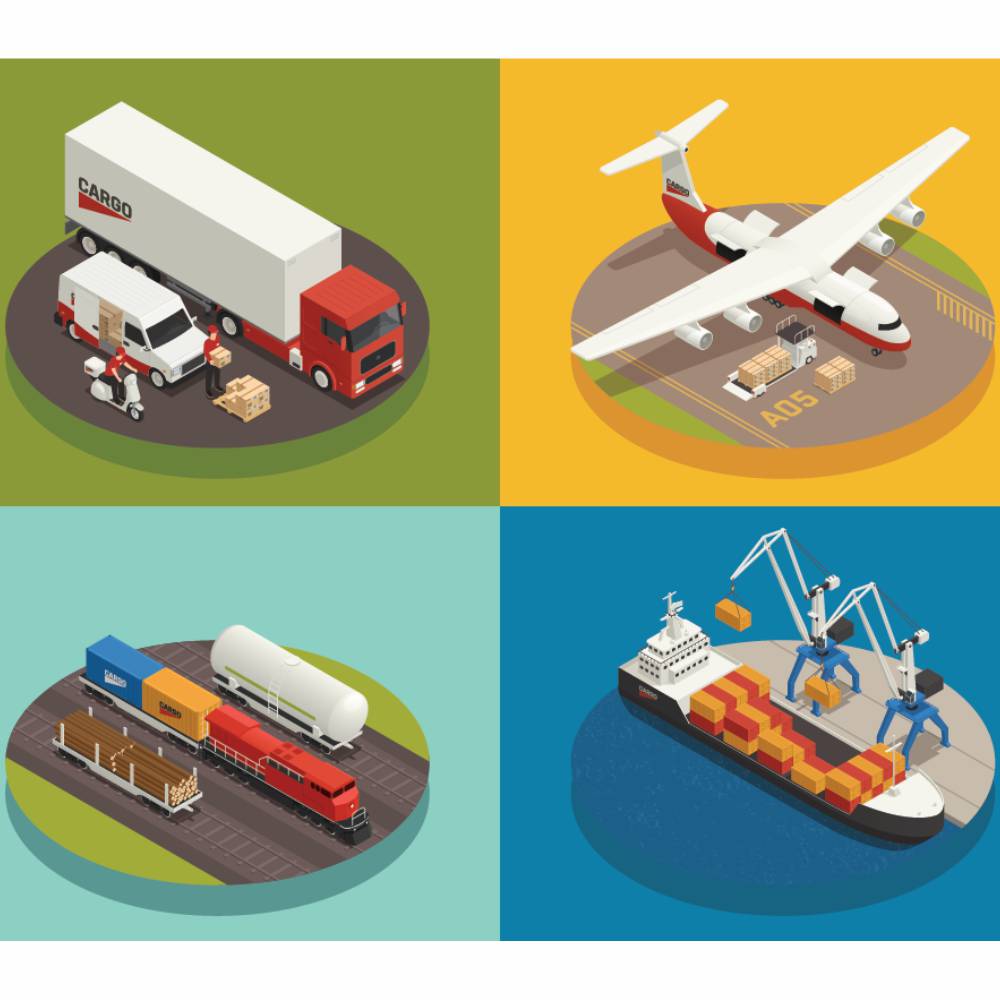The current situation reminds us of a famous quote of Mahatma Gandhi, “You may never know what results come of your actions, but if you do nothing, there will no results.” Taking a leaf from this thought, Sanjay Desai, Talent Advisory SCM Professional, explains how a recent Covid-19 pandemic is setting the foundation for major shifts and forcing proactive & corrective actions for Supply Chain leaders across the world …
COVID-19 has struck at the core of value chains affecting social, economic, and political life across the globe. The pandemic has severe implications for international supply chain networks, and it will leave its legacy for many years to come in future.
EVOLUTION OF LOCAL MANUFACTURING INTO GLOBAL VALUE CHAINS IN LAST 4 DECADES
Over the past four decades, much of worldwide manufacturing production was organized in what has become as global value chains (GVCs). Raw materials and intermediate goods are shipped around the globe multiple times and then assembled in yet another location. The final output is re-exported to many end consumers located in both developed and developing markets. If the global economies have to avoid the prolonged effects of economic distress, what is required is a collaborative response amongst all nations including re-thinking and re-designing multiple elements of their supply chains. As of now, this thought process serves as possibly the most promising path amid a mercy environment.
Companies are forced to re-examine their supply chain best practices and contingency plans in place since many years. This outbreak shines a light on the need for a “change” i.e., true business continuity and disaster recovery planning. As companies figure their way out in this environment and slowly inch back to finding their path, they also need to make sure that what they will rebuild is responsive, agile, and long term sustainable.
LOOKING INTO THE CRYSTAL BALL
Going forward, companies will need to de-risk their operations by rebalancing the supply chain with a more strategic mix of local, regional, and global supply chains so if anything happens in any one of those sources, it will be easier to adapt and fulfil the need with the other. Let us look at major shifts that will drive businesses globally and areas that supply chain leaders need to change / or re-adjust their focus.
VACCINE DEVELOPMENT, MANUFACTURING, AND DISTRIBUTION
The distribution of COVID-19 vaccines will occur against a backdrop of a global supply chain still reeling from the effects of the pandemic itself, which has hampered many industries and slowed the flow of goods around the world. While some level of recovery has occurred right in the midst of pandemic, the effects are still present and may worsen as infections are on the rise in what is called as 3rd / 4th wave of infections. A successful & rapid deployment of any proven vaccine does not just rely on the amount of vaccine that can be produced. It relies on multiple factors such as infrastructure, information systems, storage & transportation capabilities and also equally important is having a workforce that can administer the vaccine handling these elements in a collaborative manner.
TRANSFORMATION IS WRITTEN ON THE WALL… FROM DESIGN FOR EFFICIENCY TO DESIGN FOR RESILIENCE & AGILITY
Companies are (self) questioning relevance of their value chain models given the impacts that Covid has had on their supply chains. The word ‘Transformation’ is fundamental to the success of digital transformation framework because leaders first need to recognize the fundamental difference between change and transformation before they can lead their companies on a journey of legitimate business transformation via digital transformation. While ‘change’ is required to maintain and modernize an organization, this is not enough to sufficiently elevate both its internal capabilities and external offerings.
FROM GLOBALIZATION TO REGIONALIZATION
Logistics hubs will re-emerge at the regional level. To eliminate single source model and to establish a flexible and adaptable supply chain, product integrators, sub-system suppliers and component suppliers will source, assemble, and deliver from their own backyards. This change had been kicked off several years ago because of increasing Chinese labour costs, Covid 19 just helped to hasten that process along the way during 2020. Labour cost differential, once the major attraction for companies towards Asia, has already shown signs of shrinking over past few years.
CHANGES IN THE CUSTOMER PROFILE, CONFIDENCE, AND EXPECTATIONS
Until recently (pre Covid19) consumers took safety & security of supply as “granted” or may be never gave enough thought to it. The products they consumed were safe; the venues in which they travelled and worked were safe. But alas!!! COVID-19 has ripped those assumptions apart. Consumers now want safety, sustainability & transparency more than ever. And it is the responsibility of companies to provide it. Balancing strategic imperatives such as risk, sustainability and consumer preference will challenge & may prevail over pure economics in the near future.
USE OF EMERGING AND ADVANCED TECHNOLOGIES
The industry 4.0 was already due, but Covid19 provides opportunities for companies to leapfrog and embrace Digital Technologies as a means to transform business models, reduce cost, increase visibility and customer engagements. The time has come for companies to execute their words into actions. Companies who are able to navigate and embrace technology capabilities to digital platforms will be in a better shape to mitigate the impacts to their business and continue to sail in troubled waters sustainably.
MAJOR TECHNOLOGIES THAT WILL BE CATALYST FOR FUTURE
- Machine learning for demand planning
- Advanced analytics for inventory planning
- Control tower technology for increased visibility and transparency
- Driverless vehicles and use of drones
- Big data combined with AI-predictive & prescriptive analysis
- Autonomous guided vehicles (AGVs) in storage / warehouses
- 3D Printing and additive manufacturing
- RPA for repetitive algorithms/ applications
IMBALANCE IN FREIGHT (DEMAND SUPPLY & ESCALATING FREIGHT RATES)
Air freight rates have sky-rocketed 7-8 times their usual rates during Covid period for most commodities and especially for high demand /essentials and medical related supplies. Eventually these new air freight rates will come down but at a significantly much higher % in relation to Pre-Covid19 period. This is an after-effect caused by permanent loss of air freight capacities globally. Companies globally need to build this new element in their cost v/s customer service tradeoffs strategy.
SHIFT FOCUS FROM JIT TO JIC INVENTORY STRATEGY
Companies globally are forced to re-look into their modern stocking strategies & resorting to drastic measures like reducing their reliance on single source/ reduce LEAN supply chain practices, and shift focus from JIT (Just in Time) to JIC (Just In Case) strategy. These renewed practices have a direct bearing on the levels of the inventory and a potential threat to working capital deployment. Companies need to strike balance between inventory holding v/s service levels and better use of expedited freight as a hedge more often than in the past.
RESURGENCE OF NEAR SHORING OF MANUFACTURING
Companies need to move their production footprint closer to markets/ customers to the point where it is being consumed. This has wider impacts to capital costs, infrastructure cost and inventory holding costs. Despite these, Companies are exploring ways to re-design their global supply chains, and more & more companies will consider moving offshore operations back to their own factories, or at least their own continents.
DEMAND ON STORAGE FACILITIES & SUPPLY GAP
As companies work on reshaping/ transforming their supply chain manufacturing / sourcing footprints, it will have a domino effect on their storage requirements. This is especially true to pharmaceutical / temperature-controlled products (i.e., vaccines) where the demand for GDP compliant storage facilities will be at a record high in the first couple of years. Companies need to manage storage needs v/s costs while maintaining regional capacities and meeting (local) compliance requirements.
MULTI-MODAL TRANSPORTATION WILL BE ON AN ESCALATED PATH
To reduce cost-to-serve impacts and to build pipe-line consistency & visibility of supply, companies will shift away from air freight and resort to multi-modal transportation. We will see growth in alternate means of transportation like rail, road & motorways globally in near future.
COLLABORATION ON THE RISE (HORIZONAL AND VERTICAL)
Companies need to better understand the merits of collaborating with their partners vertically as well as horizontally for a win-win solution. Sharing of critical business information leads to enhanced knowledge across the value chain that allows to achieve lower inventory levels and higher inventory turns, lower transportation & warehousing costs. Companies need to form long term partnerships in their supply network for enhanced negotiation ability, better visibility covering their tier II and tier III suppliers.
PROLIFERATION OF ONLINE BUSINESSES
Most likely a high % of these customers will never return to buying retail and will continue buying online. This phenomenon is felt very naturally in Asia and emerging markets around the world.
OPPORTUNITIES FOR FREELANCE - NOW CALLED “GIG ECONOMY” WILL INCREASE
Freelancing was created by underground jazz musicians of the 1920th, who engaged the public in jazz culture through irregular live concerts, called ‘gigs’. These performers were paid right after the event. This “payment-after-completion system” went far beyond the jazz scene in late 80s/ 90s and actually started to creep in during last decade. Covid19 has, in a way, pushed many professionals to embrace this model further. While “gig workers” offer employers greater workforce management flexibility, HR leaders will need to evaluate how performance management systems apply to these workers and determine whether they will be eligible for the same benefits as their full-time peers across the industry.
REDUCE PORTFOLIO COMPLEXITY
SKU Harmonization when done right, assortment simplification will unlock significant benefits. First and foremost— and contrary to conventional wisdom— selling less often leads to selling more!!!
REVIEW CUSTOMER VALUE PREPOSITION
A Customer Value Proposition (CVP) is a promise of potential value that a company delivers to its customers and stimulates customer engagement. The value preposition needs to be in the same language as customers, so they are better able to resonate with your products and services cajoling them to buy the products consistently. Gathering customer insights through interviews, focus groups, and frontline observation is rather straightforward. Competitive analysis should also feed into customer value proposition work and can easily be accomplished in this age of technological excellence using AI and Big data analysis. To win customer, companies need to define their value preposition and be able to communicate it effectively.
GLOBAL TRADE & TARIFF SITUATION WILL CONTINUE TO BE SEVERELY IMPACTED
The COVID-19 pandemic is likely to be known as that inflection point in the history which changed the nature of the post-World Trade Organization (WTO) global trade policy environment. The last time the world witnessed a similar situation was in 1995 when WTO was established, creating a rule-based global trading system. The U.N. Conference on Trade and Development said in its annual report, "Review of Maritime Transport 2020," that its forecast for maritime trade growth this year has been cut to 4.1%. UNCTAD said the shipping sector has been forced to make sacrifices amid weaker global oil demand and tariff wars between the United States, China, and the European Union.
WORKING REMOTE OR “WORK FROM ANYWHERE” WILL BE ON THE RISE
The outbreak of Covid-19 has forced organizations into perhaps the most significant social experiment of the future of work in action, with work from home and social distancing policies radically changing the way we work and
interact. But the impact on work is far more profound than just changing where people work; it is also fundamentally altering what work is performed and how we perform it. Another imperative for HR leaders is to evaluate the longer-term impact will have on their organization’s operations, work culture and strategic goals. They need to identify which require immediate action and assess to what degree these trends will change pre-COVID-19 strategic goals and plans. A recent Gartner poll showed that 48% of employees will likely work remotely at least part of the time after COVID-19 versus 30% before the pandemic started.
CONCLUSION
The current pandemic is just the latest in a series of global risk events which have exposed vulnerabilities in the supply chain. It will be the catalyst to rethinking how organizations are led, organized, and operated, which will lead to a fundamental rebalancing of the supply chain and business operations. One key question business leaders / board members need to answer is What are you going to do to rebalance your supply chain model and ensure you ensure you have a resilient, digitally enabled, agile supply chain and operations of the future?
The human dimension will be back, and it will play a prime role in rebalancing the global supply chain during this crisis, and well beyond. The Toyota Principle of “autonomation” (automation with a human touch) has proven to be the most adaptable during periods of crisis and there is every possible thought that going back to the board once again is the Right Thing to do NOW.

Categories

Magazine Editions






















